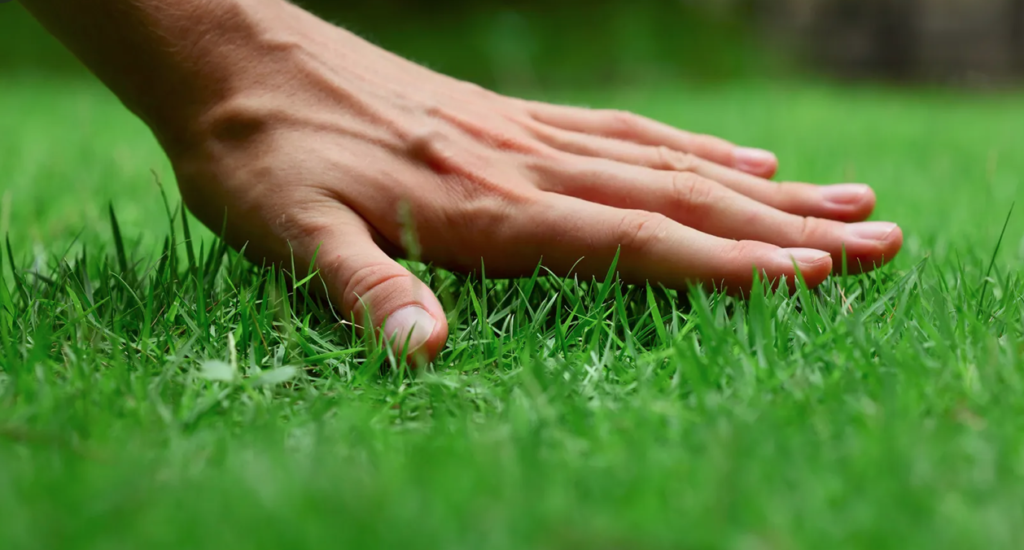Some people say: “The grass is always greener at your neighbor’s house.” Is this really the truth? No, you also can achieve a thick green lawn without much effort. All you need to know is how to mow and care for your lawn. Then the whole job will be a pleasure. This article is going to explain how to make grass thicker and fuller easily.
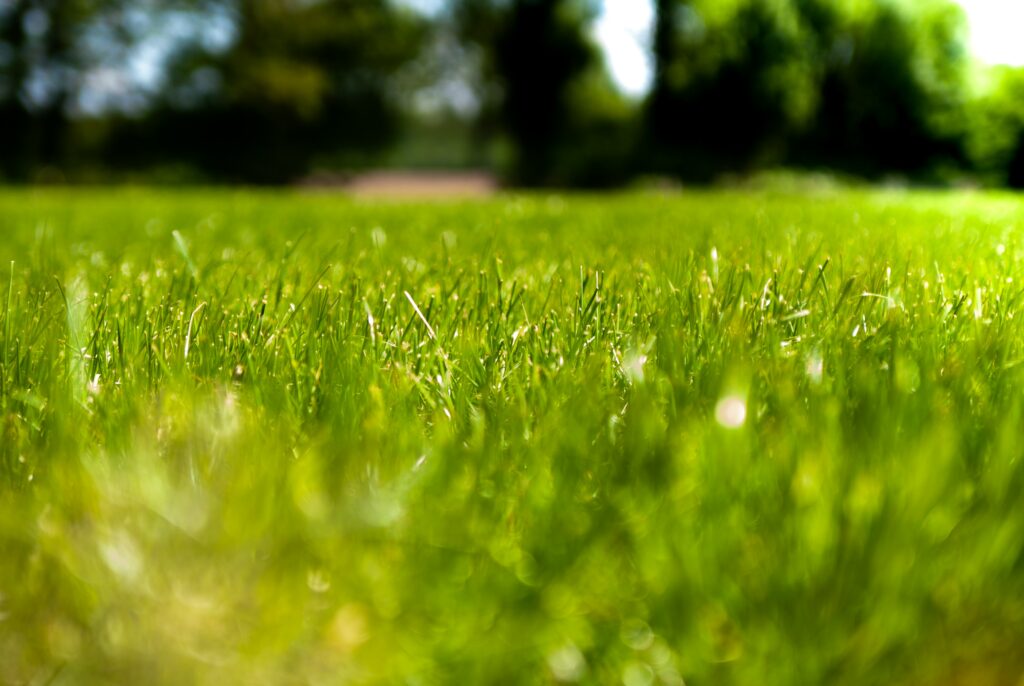
How to make grass thicker and fuller and why it is necessary at all
After choosing the variety of natural grass, it is necessary to be planted in our garden. It is useful to know the basic operations that need to be carried out to maintain its quality at a high level.
If we want to get a thick lawn without gaps and chlorotic patches, the tasks include more than just watering and fertilizing.
Planting natural grass is a simple solution that does not require huge effort and will create comfort and harmony in your home.
Undeniable benefits of a lawn that will turn the backyard into a fairy tale
Natural grass controls erosion and stabilizes the soil, creating a green lawn area. Grass, thanks to its network of roots, forms a compact, porous carpet and, thanks to its wadding, absorbs water droplets instead of causing them to drip toward rainwater, which entraps soil particles behind it.
This water, intercepted by the turf, is directed toward the vegetation on the property, which helps reduce soil compaction. A dense lawn absorbs six times more rainfall through its felt than any other system.
Numerous roots help maintain slope infrastructure and prevent landslides. Grass absorbs sunlight through its foliage, making it an incredible natural air conditioner.
On a hot summer day, for example, when the air temperature is around 32 °C or 89 °F, the temperature at ground level on a paved road or a lawn without grass will be between 40 °C or 104 °F and 44 °C or 111.2 °F.
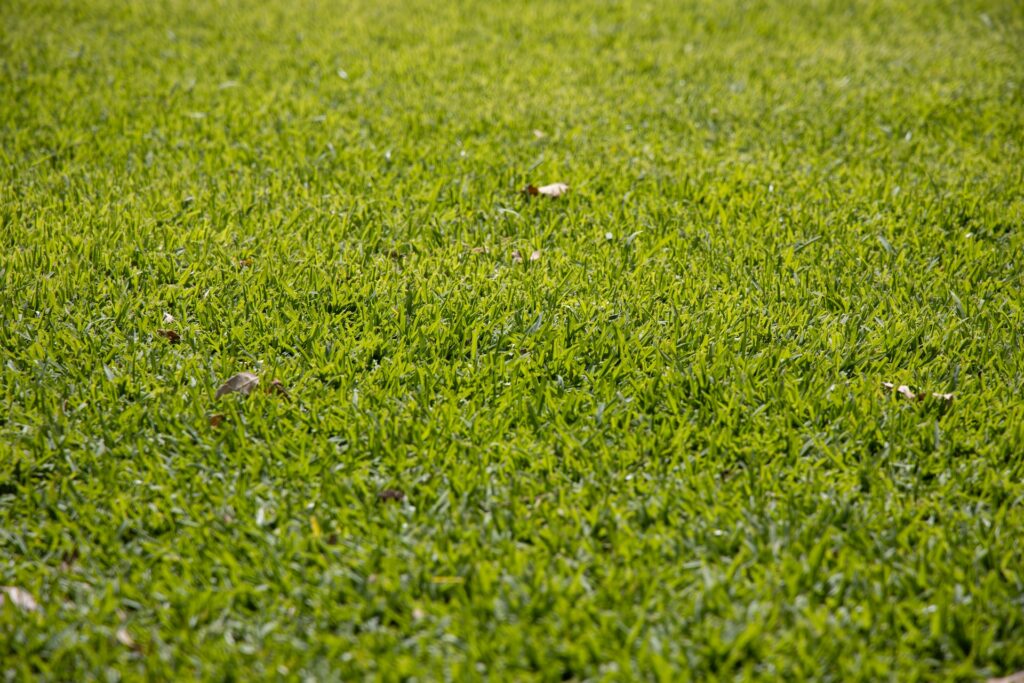
On a dense lawn with 8 cm of foliage, a very pleasant temperature will be restored. Grass reduces unwanted noise by 20-30% by absorbing noise instead of amplifying or reflecting it.
If these benefits aren’t enough for you, consider that a lawn creates an unbeatable look for your yard.
Psychologists have proven that people who love gardening and particularly lawn care are generally happier than those who don’t like it.
Lawn overseeding: a waste of time or a necessity
Lawn replanting is the addition of new seeds to existing grass. Many people, including professional gardening connoisseurs, that adding seeds in the fall or early spring will make their garden the most beautiful around.
How to make sense of this question? There is a place for overseeding, especially when your plot is located in an arid region or a shady spot.
In that case, just add exactly the right type to the main seeds to help your grass seeds grow. You will definitely be pleased with the result and get a thicker and fuller lawn in a few months.
Turf rolling: when it is necessary
It seems that this operation is contrary to aeration in terms of its mechanical action because, after all, the purpose of rolling is to compact the turf. Depending on the condition of the turf, one operation or another will suit you.
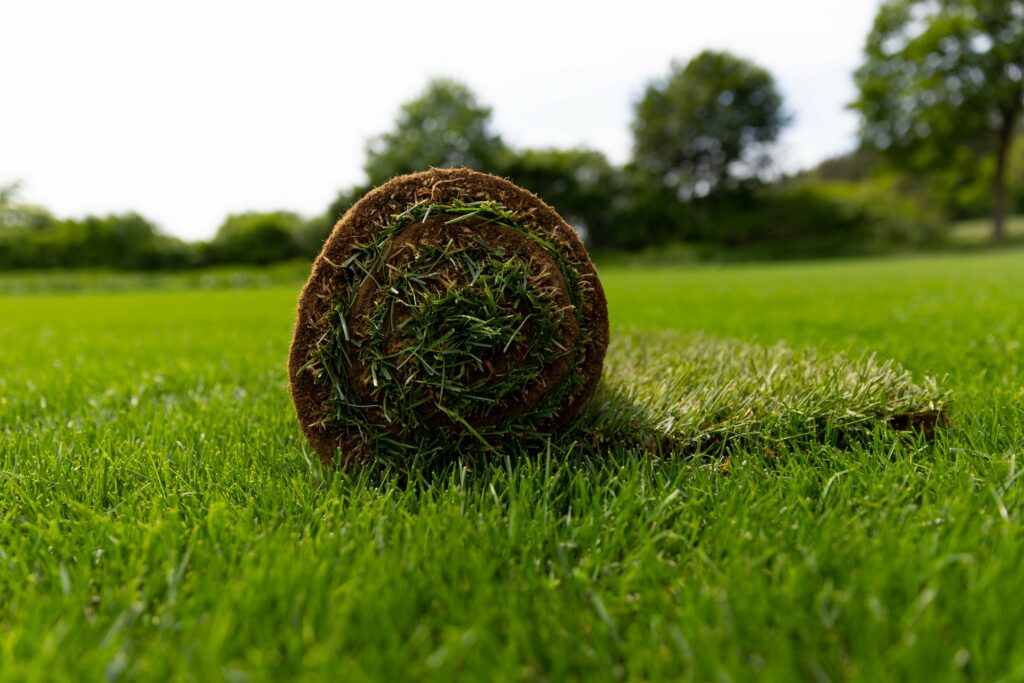
As a result, if the soil is very clayey and prone to compaction, then harrowing should be omitted or done when the soil is dry.
For example, hoeing the soil after sowing or reseeding is recommended. If the surface is very uneven due to wear and tear, it is also recommended to level it.
In other cases, this is done to prevent roots that have been raised for various reasons, such as heavy raking or poor cutting height, from drying out.
Regular mowing of the lawn makes grass thicker and more voluminous
Knowing how to make grass thicker and fuller, when to get proper mowing, and what tools to use is essential to having a gorgeous, evergreen lawn year-round. Every time you mow your lawn, you are helping it grow, resulting in a thicker, denser, and more uniform lawn.
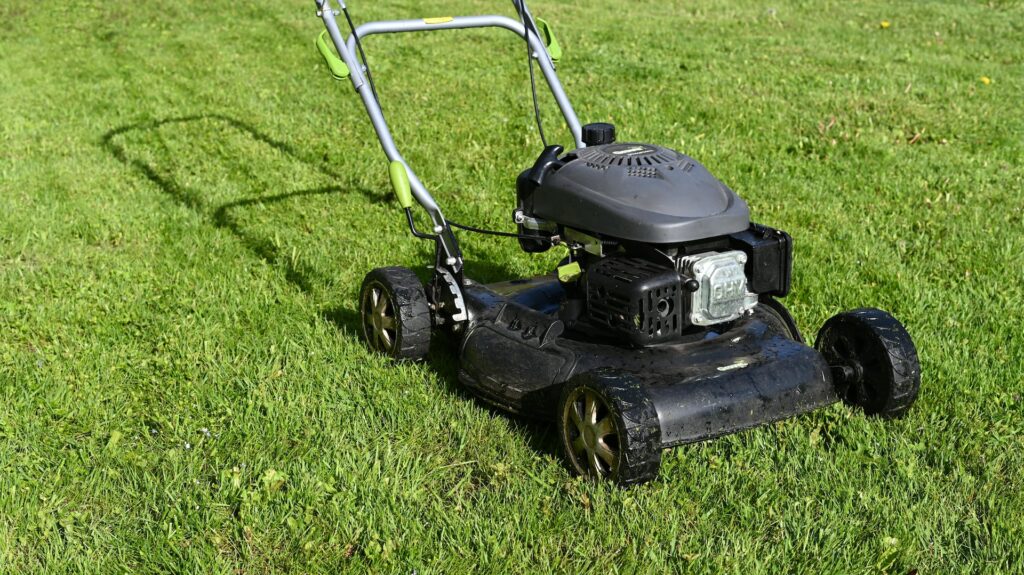
Here are factors to know when to mow the grass. If you’re still wondering about when to properly mow your lawn, it’s important to understand the following:
- there is no fixed date;
- the frequency of mowing depends on weather conditions;
- the time of year also plays a role;
- the kind of grass you sow.
As a rule of thumb, grass should be mowed more often in summer (about once a week), and in the spring and fall, 2-3 times a month is enough. But things change in the winter, and the frequency of mowing should be reduced or almost stopped.
Note: The fundamental thing is that you have to make sure the garden isn’t wet, otherwise the grass clippings won’t make the lawn grow thicker, for a reason, the grass will not be the same size.
If you are in the middle of summer or the spring heat begins to intensify, always remember that the best time to mow your lawn is in the late hours, as you can avoid the hottest hours of the day.
Average mowing height of natural grass
Mowing the lawn is one of the most important things you can do to create an evergreen garden. For this, the height shouldn’t exceed about 5 cm.
Although this can vary depending on the type of grass planted, for example, if we determine the height depending on the type of lawn:
- 6-7.5 cm for Gramon or Grama de San Agustin grass seed;
- 4-4.5 cm for Cynodon Dactylon or Bermuda grass seed;
- Up to 7.5 cm for the grass variety Cañuela Alta or Bluegrass grass seed.
If you neglect your lawn by not mowing and watering it often enough, it will not only lose its beauty but also become a health hazard for you and your neighbors because weeds usually attract insects and some of them often carry diseases.
Another disadvantage of too high a lawn is that it becomes a haven for pests, which affect other plants in the garden, which in turn leads to bare spots in the garden.
How to make Bermuda grass thicker
If somebody asks how to make grass thicker and fuller, for Bermuda example, then the answer will be evenly relevant to another lawn.
The best way to make Bermuda grass thicker is to feed the lawn with a slow-release nitrogen fertilizer such as Milorganite and then water it once a week to improve the growth rate. In addition, lower mowing will improve lateral growth and make the lawn thicker and fuller.
Fertilize your lawn with nitrogen fertilizer, such as Miloarganite. This fertilizer will slowly release nitrogen and retain the necessary amount of moisture for better seed germination.
Among other things, side-cutting the Bermuda grass will make the growth thicker and fuller. Then simply water such grass once a week during times when it gets more sun and once a week during cloudy weather.
Note: Bermuda is an aggressive grass that grows up to 12 cm in height. Not for nothing do some authors consider it a weed altogether. Don’t mow it too close, but at the same time don’t let it grow to its maximum length.
Using the Fiskars Stay Sharp Bermuda grass cutter will make the process much easier and cutting grass won’t be a nightmare.
What is a result of a thicker lawn
If you want to know how to make your grass thicker and fuller, you first need to understand why you have a thin lawn. Lawns can be thin because of the low nutrients in the soil. Compacted soil also slows nutrient absorption and, as a result, growth and blooming.
If you plant seeds contaminated with bacteria, you shouldn’t expect anything good, either. It is also recommended by many experts to avoid too much shade and weeds on your property, since they often cause the most difficult problems, such as bare spots.
If you want to have thicker and fuller grass, just follow these simple recommendations, which will not take up much of your time.
What is soil scarification and aeration
Aeration and scarifying are operations whose purpose is to prevent sintering or compaction of the turf and to prevent the growth of mosses. To aerate the lawn, it is sufficient to make two perpendicular holes in the lawn with a rake or pitchfork.
This will loosen the lawn slightly and prevent unnecessary compaction. A thin lawn should be aerated in the spring and re-aerated in the fall is recommended. Scarifying also allows you to raise the so-called felt part of the lawn, which is essentially its drainage system.
Felt is a mixture of flattened turf, roots and hardened soil that becomes increasingly impermeable. Mowing with a pitchfork lifts the lawn layers and allows the grass to grow faster.
Irrigation features: The best irrigation if you want thicker grass
It makes sense to install sprinkler irrigation because with hose irrigation, we can have drier areas and other waterlogged areas, plus it requires us to time and schedule how we should irrigate.
This is why sprinkler watering is the most advantageous option because the schedule and duration of the watering can be programmed, which avoids watering different areas and makes the task easier.
There are sprinklers on the market with rain sensors that automatically stop if it rains. This allows you to create a healthy lawn and save water considerably.
I recommend that you also read up on the best way to water lawn without sprinkler system.
The role of lawn fertilizers
Another important consideration is fertilizer, which, depending on the type of lawn, will require more or less. Fertilizer helps the lawn grow stronger and more vigorous, or at least prevents some grass seeds from growing.
Others will grow as strong or stronger than the lawn itself, but that’s what we exist to eliminate them. Nitrogen fertilizer should be the basis of such fertilizer, although a balanced nutrient fertilizer wouldn’t hurt either.
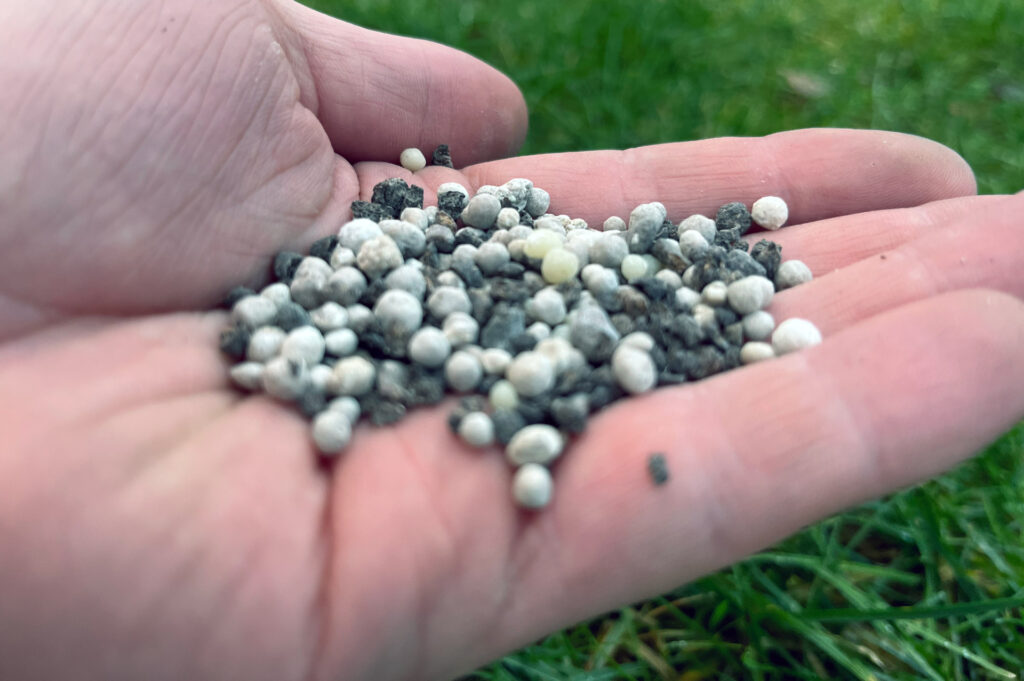
There are many different kinds of fertilizers on the market that are particularly suitable for natural grass. One of the most common ways to fertilize is to use granular fertilizers with a 3-1-2 NPK ratio.
For example, 20-5-10, but it is important to have calcium, magnesium and trace elements (especially iron) in it. The dose for applying this type of fertilizer is 30 to 35 grams per square meter of surface.
It is important to wet the fertilizer down with water afterward so that it releases slowly. If in the area where we planted natural grass, irrigation water tends to accumulate a lot of salts (hard water), it is always better to look for nutrients that do not contain chlorine in their composition for avoiding high soil pH in your garden.
List of the best types of fertilizers for different soils
There are now a variety of products with organic certification, zero residue and organic. Some of the sources from which this organic fertilizer can be obtained are as follows:
- liquid or solid organic matter;
- vegetable compost;
- earthworm humus;
- organic NPK or NK pellets;
- amino acids and seaweed;
- lawn irrigation;
- organic slow release fertilizer;
- lawn sprinkler irrigation.
After applying the fertilizer, it is recommended to water lightly to allow the fertilizer to better adhere to the soil and gradually dissolve.
Note: You should never apply fertilizer with the wind, as this can carry particles away and leave empty areas without fertilizer.
So if you want to achieve a perfect garden all year round, choosing the best fertilizer will help us in this endeavor.
Optimum lawn PH for outstanding growth and dense yard lawns
The optimum pH for grass growth, according to soil tests, is between 5.5 and 6.5, forming slightly acidic soils. Regular soils are destructive to grass growth because of the low availability of elements.
If soils are very basic, it should be carried out soil correction with sulfur or gypsum, not more than 250 kg/ha at the beginning of the growing season (often in spring, sometimes in autumn).
Weeding and removing weeds – the key to a clean and tidy yard
Weeding is an essential attribute of any agriculture, whether it is intensive farming or a home garden. Dandelions are common companions, as are plantain and many other plants that tend to invade the soil, making a sparse lawn.
In a small garden, annuals are relatively easy to get rid of by hand, with patience and a little time. Dandelions should be pulled out by the roots, not cut. It has a very deep and persistent tap root that must be removed.
There are devices for removing the plant with the root that anyone can buy for this purpose. The problem arises with perennial plants, which, unless selective herbicides are used, are not easy to get rid of.
It all depends on the type of lawn you want. For a lawn such as a soccer field or golf course, you will have no choice but to use this type of herbicide.
If you don’t mind having a more country lawn with a few weeds that aren’t too noticeable, you won’t have to worry too much about the condition of the grass and weeds.
Selection of herbs and mixtures
Usually, a mixture of seeds of different varieties of grass is made. This is accomplished because the deficiencies of one variety are covered by another variety, and the deficiencies of another variety are covered by the next variety, forming a turf with a grouping of very positive characteristics.
Imagine, for example, that you sow a certain variety of grass that takes a long time to germinate, and mix it with another variety that is less attractive, but more resistant and with much faster germination.
From the mixture of the two varieties, you get grass immediately grows. Then the stronger one (more resistant and with less need) will win the battle for a place in your garden.
How to seed a lawn area
First of all, we need to talk about the dates. It’s frustrating to see it as it is, all spotted, sandy soil, but take your time, there are seasons when it’s best to get the job done.
As you can imagine, early spring is an ideal date, though not the only one.
It’s a time when everything sprouts almost effortlessly. Fall is also okay if you don’t want to wait until next spring. This gives time for the seeds to settle and germinate little by little (depending on the climate).
If dead patches of lawn need to be removed, it’s best to use a hoe to completely remove the affected area, including ripping out old deep roots with a help of grass blades. (This also eliminates possible seeds of competing species).
After removing the affected areas, simply aerate the soil thoroughly (it will take longer to recompact), flatten, seed, and cover with a good substrate, which makes grow thicker.
If necessary, compact the soil with a small roller or something similar, and water the soil liberally after you have planted the seeds.
Nature will do the rest of the work: wind, sun, and animals, recreating your grass thicker.
Conclusion: A beautiful lawn is not a myth but a reality
Of course, anything can cause your lawn to thin or lose color. However, practice shows that if you follow the rules, there’s a 95 percent chance you’ll do well and finally see thicker and fuller grass like in your favorite movies. For dog owners lawn caring becomes even more difficult. If you like to learn how to grow grass with dogs, read another article.
By constantly practicing, in the art of creating unique backyard views, everyone will be happier with the knowledge that their hard work didn’t go to waste.
Photos by Jorien Loman on Unsplash
Photo by Jorien Loman on Unsplash
Photo by Andres Siimon on Unsplash

